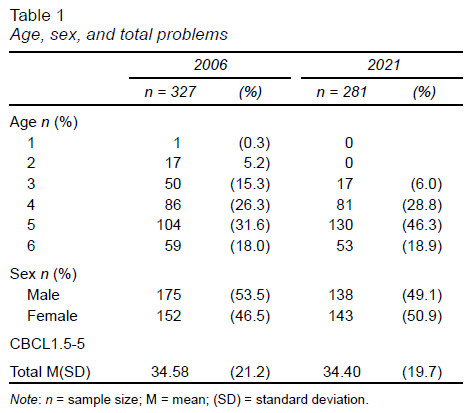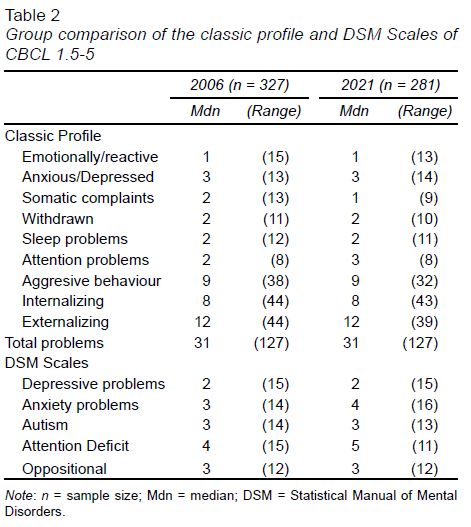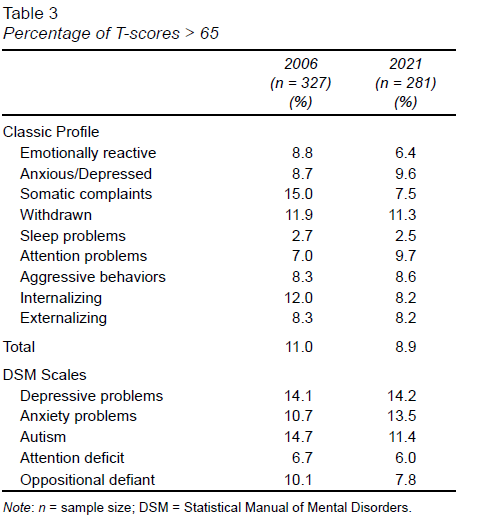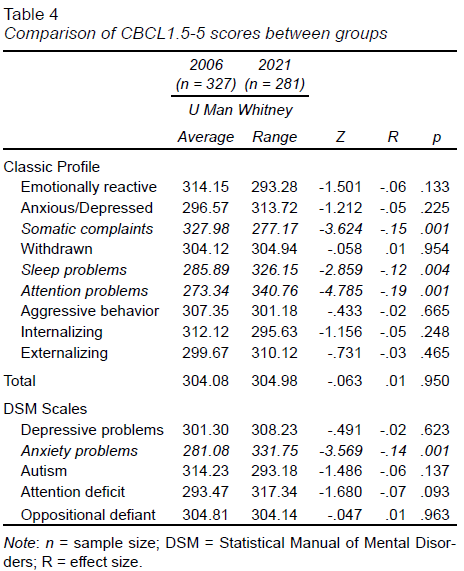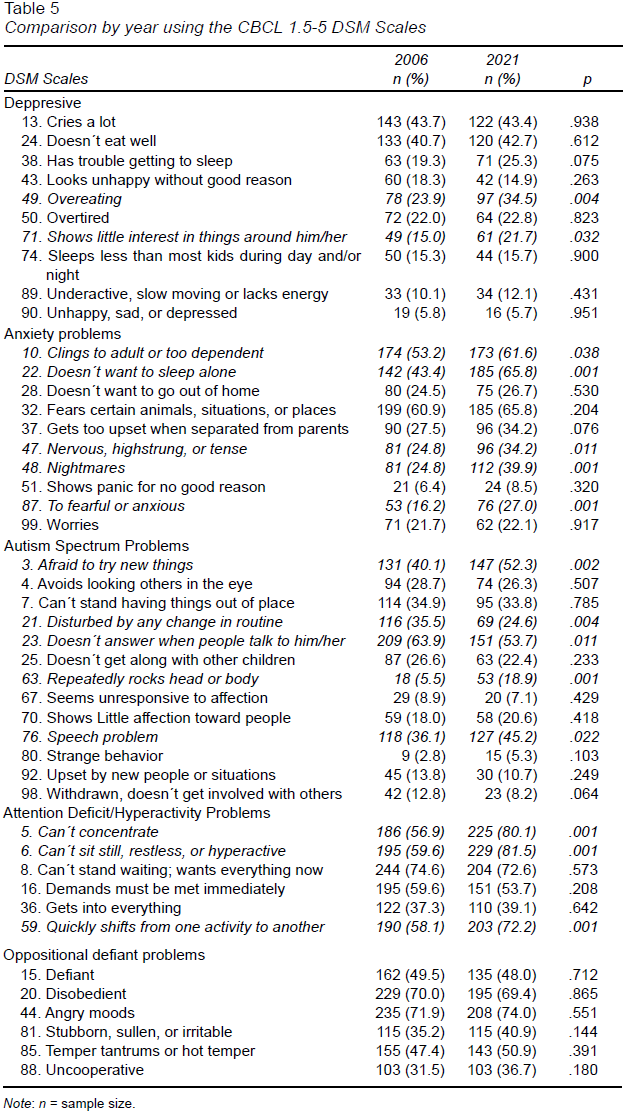INTRODUCTION
On March 11, 2020, the World Health Organization declared COVID-19 a pandemic. It was a global public health emergency requiring immediate, radical measures to stop its spread. The main measures focused on social distancing, lockdown, the closure of schools and entertainment venues, as well as working from home.
In Mexico, lockdown began on March 23, 2020, with the suspension of non-essential activities and in-person classes. On June 1 that same year, some activities were resumed except for school activities, with classes continuing to be given online. However, this initiative encountered several obstacles such as the broadband internet infrastructure in Mexico, the lowest ranked in the OECD (Mecinas, 2016), the suboptimal quality and speed of the internet, parents’ lack of knowledge of the use of internet platforms and the lack of curricular adaptation to remote learning.
School authorities therefore added the option of open television classes to help families without internet (Pamplona, 2020).
However, despite these efforts, a survey of Mexican parents (N = 4000) conducted during the pandemic reported that the majority (77.8%) considered that remote (online) education failed to ensure children’s education, and that the level of learning was not comparable with in-person classes (83.5%). Nevertheless, 70.6% of parents opposed the return to face-to-face classes in August 2021. According to the Instituto Nacional de Estadística Geografía e Informática (INEGI, 2020), 2.2% of preschoolers did not complete the 2019/2020 school year, with most parents (94.75) citing the pandemic as the reason for this, despite the fact that 90% of parents reported maintaining contact with their children’s schools.
Most preschoolers used a cell phone (72.2%) or television (26.3%), with only 4% using a computer, and 4.1% did not engage in distance learning. In addition, 26.6% of preschoolers did not re-enroll in the educational system, with 29% attributing this to the pandemic. A total of 98.7% of preschoolers required help to continue their school activities, which was mainly provided by the mother (84.4%), with 1.2% reporting that they had dropped out of school permanently.
Studies in high-, middle- and low-income countries have consistently shown the positive effects of school attendance on child development (Claessens & Garrett, 2014; Rao et al., 2017), labor force participation, and physical and psychological health in adulthood. These protective effects are greater in more socially disadvantaged children (Burger, 2010; Schmerse, 2020; Wong et al., 2014).
Brooks et al. (2020) reviewed the psychological impact in some countries due to quarantine for SARS, Influenza, Ebola, reporting that protracted stressors such as isolation had harmful, long-term effects on children and adolescents. Da Silveira & Siepmann (2020) reported that isolation due to the pandemic had repercussions on the mental health of children and adolescents such as fear, anxiety, constant alertness, worry, stress, changes in sleep patterns, sedentary lifestyle, and changes in eating habits. Fear of infection, frustration, difficulties in education, boredom, inadequate information, lack of contact with peers, teachers, and lack of personal space at home trigger anxiety and depression, depending on a person’s age and sex. Ulloa et al. (2022) report higher anxiety and depression in adolescents and adults, as well as in women in all age groups.
Isolation due to the pandemic had repercussions on the mental health of children and adolescents such as fear, anxiety, constant alertness, worry, stress, changes in sleep patterns, sedentary lifestyle, and changes in eating habits (Da Silveira & Siepmann, 2020).
The few studies of preschool children ages three to six show that confinement delayed emotional and social development compared to other age groups, expressed as clinginess and fear that family members could contract the infection (Jiao et al., 2020; Khera et al., 2023). Young children ages two to five showed high levels of stress, anxiety, behavioral difficulties, hyperactivity, and inattention, whereas adolescents displayed anxiety and depression symptoms. (Viner et al., 2021).
Through a meta-analysis of the impact of the pandemic on preschoolers, Khera et al. (2023) concluded that preschoolers have experienced a delay in language production and comprehension, as well as their motor skills and social interaction, and sleep problems.
In Mexico, there is a dearth of studies on the emotional and behavioral impact associated with lockdown due to the pandemic in children. León et al. (2023) worked with fifty-one parents of preschoolers, finding that preschool children ages three to six had a prevalence of 68% of disturbed sleeping. Moreover, the use of electronic devices in bed, emotional distress and behavioral difficulties were associated with the severity of disturbed sleeping. They observed that 15.6% of the children in their sample reported a deterioration in their mental health, concluding that lockdown had had an impact on preschool children’s sleep and well-being.
Another study conducted on Mexican and Chilean adolescents reported that during the pandemic, late adolescents were the group that scored lowest in well-being. They also found a high prevalence of poly-victimization in girls and late adolescents, confirming that girls are more likely to experience violence possibly associated with the patriarchal systems in place in several Latin American countries (Bravo-Sanzana et al., 2022).
A study in Mexico conducted on preschoolers found that the main concerns about COVID-19 were related to the health of their families and themselves, and being unable to go out and play, see their grandparents, be with their friends, or return to school (Monjarás & Romero, 2021).
It is important to note that the pandemic could be an opportunity for parents to learn adaptative coping strategies for stress that they can teach their children. Adaptative or active coping strategies are associated with actions designed to address a stressful situation (Tobin et al., 1989). During the preschool stage from three to five years of age, parental involvement is vital for children to learn and adopt coping practices at the beginning of their lives (Armstrong et al., 2005). The way parents help their children cope with stress today is related to how their children will cope in the future, which could enhance their well-being.
Given the importance of monitoring the mental health of Mexican preschoolers for prevention and care, as well as the limited research conducted in Mexico, the following study was undertaken to identify and compare the emotional and behavioral profiles of Mexican preschoolers assessed in 2006 with those assessed in 2021 (during the pandemic), hypothesizing that those evaluated in 2021 would suffer from more depression, anxiety, sleep problems and inattention than those evaluated in 2006, or other difficulties, using the Child Behavior Checklist 1.5-5 (Achenbach & Rescorla, 2000). This is an internationally recognized instrument, comprising twelve problems rated by international experts, consistent with the Statistical Manual of Mental Disorders (DSM-5) diagnostic category used in twenty-one countries. The translations were done by a translator fluent in English and the language of interest (Rescorla et al., 2011).
METHOD
Design of the study
The study design was cross-sectional and comparative.
Participants
Two databases were merged. The first one corresponds to the validation study of the Child Behavior Checklist (CBCL 1.5-5) for children ages one to five, from which community Albores selected participants in 2006. The second database belongs to a study conducted in 2021 by Monjarás with community participants.
All participants were typically developing children (N = 608) ages 18 months to six years, recruited from the general community and divided into two samples:
2006: preschoolers (n = 327) recruited at five state-run daycare centers located in four Mexico City boroughs. Inclusion criteria were being normotypical, without a history of chronic diseases such as asthma, diabetes, or cancer, and not under pharmacological treatment. Cases with developmental delays, or a physical or intellectual disability were excluded. The total number of cases was 376, but those with unanswered items were eliminated, leaving a total of 327.
2021: children with typical development (n = 281), including preschoolers from state schools in Iztacalco; Coyoacán and San Ángel (n = 161) and low-cost private schools (n = 120) located in Gustavo A. Madero, Iztacalco and Chalco. The majority of the sample were from Mexico City. Inclusion and exclusion criteria were the same as in the 2006 sample. Cases were excluded when parents reported any developmental delay, or physical or intellectual disability on item 100 of the CBCL.
Measurements
This study used the Child Behavior Checklist CBCL/1.5-5 (Achenbach & Rescorla, 2000): a 100-item questionnaire with a Likert scale with three response options (0 = Not true, 1 = Sometimes true, 2 = Very true or very often), answered by parents or caregivers. Results were grouped into Classic Profile Internalized Problems (Emotional Reactivity, Anxiety/Depression, Somatic Complaints, and Isolation), Externalized Problems (Attention Problems and Aggressive Behavior) and Sleep Problems. The questionnaire also included the Diagnostic and Statistical Manual of Mental Disorders (DSM) scales: Affective, Anxiety, Developmental, Attention Deficit/ Hyperactivity Disorder (ADHD), Oppositional Defiant Disorder. This instrument is used worldwide, with high reliability and validity indexes (Achenbach & Rescorla, 2000). In Mexico, Albores et al. (2016) reported high internal consistency indices (Cronbach՚s alpha) for the Internalized (.89), Externalized (.91) and Total Problems (.95) scales, and a high test-retest reliability Intraclass Correlation Coefficient (ICC > .95). The clinical validity of the instrument offers acceptable indices of sensitivity (.70) and specificity (.73), with an area under the Receiver Operating Characteristic (ROC) curve of .77, and a cut-off point ≥ 24 points for the total scale.
Procedure
Both studies were approved by the principals and parents of the children, who, after agreeing to participate in the studies, answered the CBCL/1.5-5. With the 2006 sample, the questionnaire was administered in person and with the 2021 sample, parents answered the questionnaire online. The questionnaire was administered from February to June 2021, coinciding with the closure of schools, including daycare centers and preschools. The second wave of infections in Mexico took place from September 2020 to April 2021, as reported by the Health Ministry (Secretaría de Salud, 2022). According to their report, the highest peak of infections in 2021 occurred mainly in the months of January and February.
Statistical analysis
For the comparison of groups, the Mann-Whitney U test was applied for the anxiety, attention and hyperactivity problem variable in the DSM Scales, as well as the somatic complaints, sleeping problems and attention problems variables, since the normality criterion was not met when the Kolmogorov-Smirnov test was performed.
An analysis of the differences between the frequencies of the items per factor in the DSM CBCL 1.5-5 was conducted, comparing the 2006 sample with the 2021 sample, using Chi2 tests with Cramer’s V, as in the study by Schmidt et al. (2021).
Ethical considerations
The guidelines for Informed Consent of the Declaration of Helsinki, Ethical Principles for Research Involving Human Subjects, were followed in the administration of the instruments. Participation was voluntary; participants could drop out of the study whenever they chose to do so with no reprisals. The research project of which this study forms part, Project IA301521, was approved by the Assessment Committee of the Area of Social Sciences. The 2006 project was approved by the Ethics Committee of the Dr. Juan N. Navarro Children’s Psychiatric Hospital, N° IT2/18/1211.
RESULTS
The Age, Sex, and Total Problems CBCL1.5-5 score of the groups are shown in Table 1. The scale was applied to 327 preschoolers in 2006 and to 281 in 2021.
Table 2 shows the median and range obtained in the various subscales.
Table 3 shows the frequency of T-scores in the subscales for internalized, externalized, and total problems; according to Achenbach, the clinical range is above T 65.
To determine whether there are significant differences between the scales, the Mann-Whitney U test was administered. It was found that somatic complaints decreased during the pandemic, whereas sleep problems increased, as did attention and anxiety problems (Table 4).
For a more detailed analysis, the frequency of the items by year was compared. Based on the DSM scales (Table 5), in the attention scale items, there were significant differences of .001, with scores increasing during the pandemic, reflected in the items: “cannot concentrate,” “cannot sit still,” “shifts quickly from one activity to another.”
With respect to the depression scale items, scores increased during the pandemic, as can be seen in the items: “overeats” and “shows little interest in things around them.”
Percentages increased in the following items on the anxiety scale: “does not want to sleep alone,” “nervous or tense,” “nightmares” and “ fearful or anxious.”
Significant differences were also reported on the autism scale, increasing during the pandemic, particularly in the following items: “afraid to try new things” “repeatedly rocks head or body” “speech problems.”
DISCUSSION AND CONCLUSION
The purpose of this study was to analyze differences in emotional and behavioral problems in preschool children measured with the CBCL/1.5-5 before and during the pandemic. Some authors have suggested that the impact of the pandemic was less in preschoolers than in schoolchildren and adolescents (Ozamiz-Etxebarria et al., 2020). However, this finding is controversial, as Jiao et al. (2020) have suggested that young children expressed more anxiety and fear that their family members would be infected than adolescents. Gatell-Carbó et al. (2021) reported that the children most severely affected were those aged five to eight, who displayed irritability, sadness, and nervousness during lockdown. It is therefore essential to compare the data for preschoolers. Although there is a large gap between the years compared: 2006 and 2021, our results show the importance of conducting epidemiological studies to be able to evaluate the change in symptomatology and to assess the historical biases of an event such as the pandemic on a population group. These data are also useful for designing better psychiatric and psychological care services for children and adolescents.
Our hypothesis was confirmed. During the pandemic, scores for sleep, attention, and anxiety problems significantly increased in comparison with 2006. These results are consistent with some studies reporting an increase in attention difficulties and restlessness, sleep difficulties, nightmares, decreased appetite, agitation and inattention (Jiao et al., 2020; Viner et al., 2021).
Conversely, somatic complaints were significantly higher in 2006 than in 2021. This is inconsistent with certain results demonstrating greater somatic complaints during the pandemic than at the start of the pandemic (Conti et al., 2020). However, it is possible that differences in the composition of that study sample, consisting of a small number of preschool participants with neurodevelopmental problems (N = 61) who were mostly male (86.8%) biased results since in preschoolers with autism, somatic complaints are significantly higher than among the general population (Cho & Ha, 2019).
Somatic complaints are associated with social phobia and separation anxiety (Campo et al., 1999), which is why they are easier to assess in children with school attendance. Lower exposure to the school environment and social situations may have influenced the low frequency of somatic complaints in our study, with one study finding a decrease in somatic complaints in preschoolers (with and without neurodevelopmental problems) during the pandemic (Cantiani et al., 2021).
Conversely, most studies analyzing the effects of the pandemic COVID-19 on children’s mental health are cross-sectional. One study of children and adolescents in the community (N = 5823 ages 1-17) reported that 7.8% of preschoolers exceeded the cut-off point > 70 for affective problems, 4.7% for anxiety and 9.9% oppositional behavior. Our study found that 10.7% of preschoolers exceeded the cutoff point > 65 on the anxiety scale in 2006 as opposed to 13.5% in 2021, but not for oppositional behavior. However, more research is required in this regard (Schmidt et al., 2021).
In a study of 5823 participants ages 1-19, between 2.2% and 9.9% presented with emotional and behavioral problems above the clinical cut-off point and between 15.3% and 43% reported an increase in these problems during the COVID-19 pandemic. Moreover, 20% of the preschool sample (N = 2726) displayed more oppositional symptoms, crying, sleep problems, sadness, reluctance to sleeping alone, and separation anxiety. This contrasted with our study population, in which only attention problems and sleep problems from the classic profile and anxiety from the DSM scales were significant (Schmidt et al., 2021).
The pandemic had a significant impact on mental health in children from pre-kindergarten to the fourth year of elementary school in all the symptoms evaluated, whether internalized (anxiety, depression, fear), externalized (aggression, behavioral problems) or somatic (appetite changes, sleep problems).Larraguibel et al., (2021) found the most frequent symptoms to be “Irritability, bad temper” (71.9%), “Disobedience” (70.7%) and “Changes in appetite” (72.8%), The symptoms that increased most were “Being sad” (24.6%), “Lack of desire” (29.5%), “Changes in appetite” (26.4%) and “Trouble sleeping” (26.4%), which may account for the presence of depressive symptoms, unlike our study where the most frequent symptoms were “can’t concentrate” (80. 1%), “can’t sit still” (81.2%) and “shifts quickly from one activity to another” (72.2%). This may be related to prolonged screen time, exposing preschoolers to visual overstimulation that negatively influences attention problems (Castre Campero, 2020; Lizondo-Valencia et al., 2021) which is particularly noticeable when there is no such overstimulation, which could occur during lockdown.
The most frequent attention and hyperactivity items were followed by anxiety items such as “doesn’t want to sleep alone” (65.8%), “clings to adult or over-dependent” (61.6%), which may be related to separation anxiety, as reported by Viner et al. (2021). An increase in “nervousness or tension” (34.2%), “nightmares” (39.9%) and “being excessively anxious or fearful” (27%) was also observed. According to Meza and Ramírez (2020), some variables related to this type of anxiety during the pandemic include the negative impact of lockdown, identification of negative emotions (frustration, anger), organization of parenting activities and housework, changes in social interaction, parenting styles and discipline. It could also be associated with the fear that they or their loved ones could become ill and die, as reported in the study by Monjarás and Romero (2021).
Although the most frequent items were attention/hyperactivity and anxiety, an increase in certain depression items was observed, as in the study by Larraguibel et al. (2021), such as “overeating” (34.5%) and “loss of interest” (21.7%) in their surroundings. It is important to note that staying at home increased the accessibility of food, which in the long term could be associated with a weight increase, pointing to the need to follow up on the possible increase in overweight and obesity in this age group where this problem has been detected (Salazar, 2022). Moreover, loss of interest in their surroundings could be explained by the moment when the children were evaluated, which coincided with the peak of the pandemic and may have been related to increased home confinement, lack of stimuli at home, as well as the lack of interaction with their peers (Ochoa et al., 2022; Xie et al., 2020).
During the pandemic, an increase was observed in autism in the item “fear of trying new things” (52.3%), “repeated rocking of the body” (18.9%) and “speech problems” (45.2%). The latter could be related to the reflection made by Solovieva et al. (2021) on the effects associated with receiving online classes during the pandemic, such as the absence of contact and the difficulty or inability of parents to help their children with their schoolwork. Although this may have contributed to the delay in speech, further research on this topic is required.
The results obtained also coincide with the longitudinal study conducted by Cantiani et al. (2021) on Italian preschoolers, evaluated before and during the pandemic. Their results confirmed the negative impact of isolation on the emotional and behavioral profiles of preschoolers. The CBCL 1.5-5 revealed an increase in anxiety and depression, as noted in the present study. Cantiani et al. (2021) also found an increase in externalizing problems, including aggressive behaviors and oppositional defiant problems, which was not the case in the current sample. It is therefore important to continue conducting studies on the Mexican population to rule out or confirm this.
As mentioned by Dougherty et al. (2015), early childhood is a period characterized by social influences, critical social influences, including the parent-child relationship and the beginning of peer relationships. The developmental pathways of psychopathology are likely to be complex, involving early environmental, genetic, neurobiological, and physiological influences, underscoring the need for further multifactorial research, especially since the pandemic, and for longitudinal studies including social, familial, and environmental variables.
It is essential to implement prevention and intervention programs with Mexican preschoolers to guarantee their mental health, by reducing anxiety symptoms, and attention and sleep problems, which appear to have increased due to the pandemic, in addition to other variables.
Limitations
We were unable to compare the emotional and behavioral problems of preschoolers with the psychopathology of their parents, which would have been useful since some studies show how parental psychopathology affects preschoolers (Schmidt et al., 2021). Since we only worked with a limited number of preschoolers from urban areas, it would be interesting to include studies of rural areas. As no corrections were made for multiple comparisons, some of the significant differences in this study should be confirmed by other studies. It is therefore essential to continue reporting the emotional and behavioral profile of Mexican preschoolers before, during and after the pandemic.
